Remember the Suzuki Ignis? Well… it’s back. Suzuki is already a brand dominated by small cars – and the reimagined Ignis hopes to exploit a niche in the “Ultra Compact SUV” market, which currently houses models like the Fiat Panda.
Like the Panda, the Ignis is rooted in affordability, practicality and youthful style, and it too features a small 1.2-litre petrol and the availability of four-wheel drive, thanks to Suzuki’s ALLGRIP 4-wheel Drive system. But the Ignis has something the Panda doesn’t, a mild hybrid system, or SHVS (Smart Hybrid Vehicle by Suzuki) as the Japanese brand puts it.
Suzuki hopes that the Ignis will attract a new breed of customer to the brand, with sub-40-year-old women who enjoy stylish models from brands like Fiat and MINI being the key target demographic.
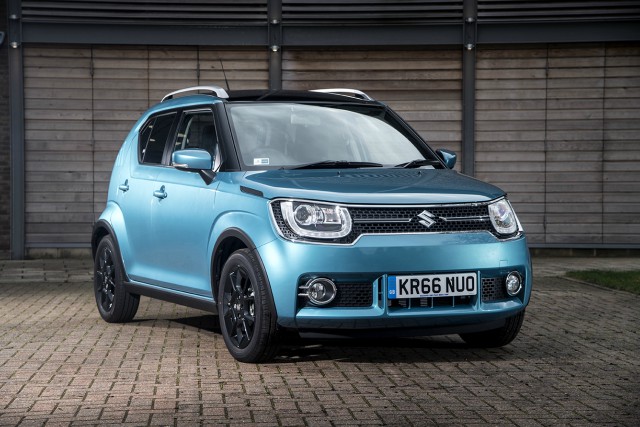
The new Ignis has clearly maintained the boxy shape of the 2008 Ignis model, but it’s undoubtedly gained some modern flair. Highlights include a chrome grille surround, more muscular body work and blacked-out A and B pillars, the latter being a nod to the Swift model. Other spliced design traits include a Vitara bonnet design and a trio of creases on the C pillar which harks back to the old Suzuki Cervo, aka Whizzkid.
The Ignis forms part of a bigger picture though, utilising Suzuki’s new platform strategy that was revealed last year. This new strategy focusses on reducing weight and increasing rigidity, something that has already been exercised on the new Baleno and the upcoming Swift. Want proof of how Suzuki is cutting the calories? The Ignis weighs just 810kg.
The latest iteration of the Ignis has already been successful in Japan, with 18,000 units sold in its first 10 months. Suzuki reckons it will shift 7,000 units in 2017, most of which will be 1.2-litre manual models, with 10 per cent expected to be hybrids/ALLGRIP model. We jumped in the 1.2-litre manual version to see what the new Ignis has got to offer.
Performance 3.5/5
The sole petrol on offer is an 89bhp 1.2-litre naturally-aspirated unit – and this can be mated to either a five-speed manual or five-speed AGS automatic transmission. Unfortunately, the peppy 1.0-litre Boosterjet engine does not feature.
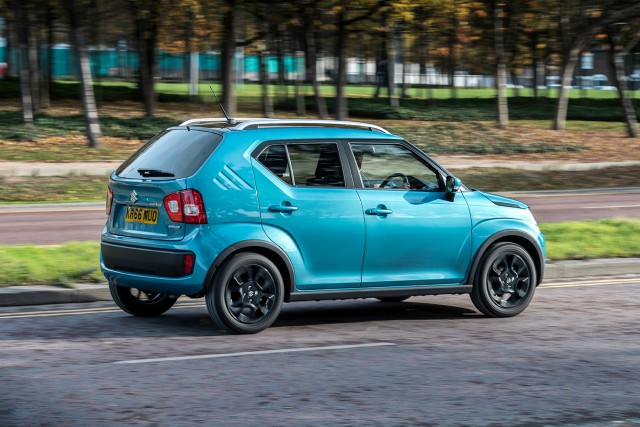
Not to worry though, due to the Ignis’ lightweight disposition, performance from the 1.2-litre is more than adequate for the driving you are likely to be doing, be it short city stints or motorway slogs. However, you should plan far in advance for overtaking on the latter. The five-speed manual is well-matched too, with snappy and accurate shifts.
The linear power delivery of the 1.2-litre is one of its best attributes, and you may even find yourself flooring it to the rev limiter just for the fun of hearing the growl of the engine smoothly build.
Ride and Handling 4/5
For such a boxy, high-sided car, you may expect the Ignis to nervously wallow about the place – but it doesn’t. Take a roundabout at speed and it is incredibly well-planted and composed. Take it a step further and chuck it into a tight bend and it may not stay as hooked to the tarmac as a supermini, but body roll is minimal and grip is plentiful. You can certainly feel the Baleno DNA intertwined within it.
The balanced ride of the Ignis is to thank here. Being ever so slightly on the firm side, it helps keep composure in the corners and yet maintains a comfortable ride. It can, however, come a little undone and shake when hitting a few bumps in quick succession, so beware of pot holes.
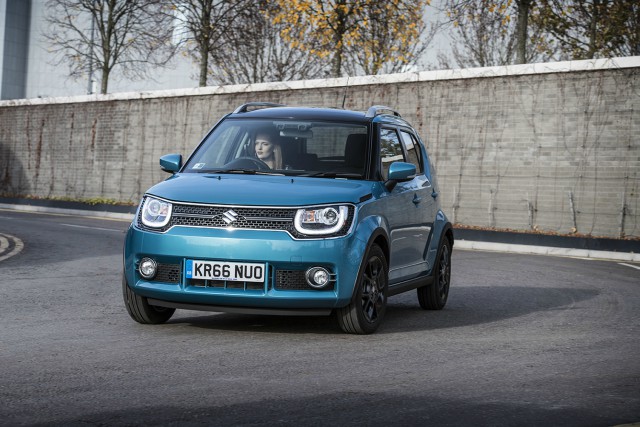
The steering is a bit of an oddity at first. For such a nippy city goer, the steering is quite weighty – which when cruising around the city feels a bit unnecessary. This is an attribute that makes it entertaining to drive on outer urban roads though, and when it comes to difficult manoeuvres like parking, the steering does lighten up at a three-quarter turn, making things a little less physical.
In terms of convenience and comfort, the seating position is great, the large windscreen makes the cabin feel airy for both driver and passenger and it has a town centre-friendly turning circle of just 4.7 metres. You do get a fair amount of wind whistle at motorway speeds though due to the upright A pillar.
Interior and Equipment 4/5
Much like the Baleno and Swift models, the Ignis focuses more on funky design rather than outright quality. Scratchy plastics are aplenty, but these are offset with quirky design features, two-tone colour schemes and colourful inserts on the door handles, air vent surrounds and centre console, which contrast with the body colour. Even the air con buttons get cool aviator-style switches.
Suzuki has also said that there are more adventurous design ideas in the pipeline, with new accessories and special editions.
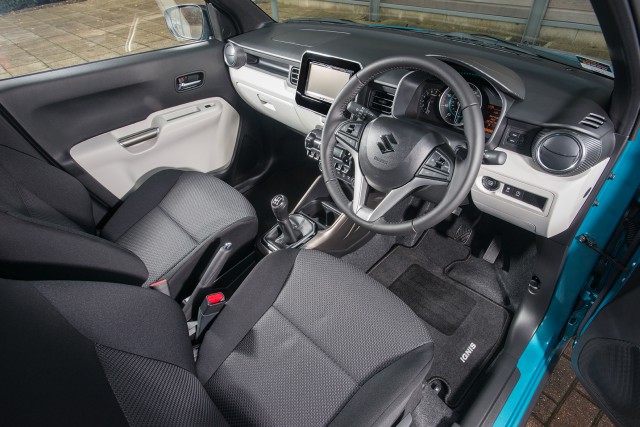
A seven-inch touchscreen dominates the dashboard, which looks the part, but could do with being a tad more responsive. Our flagship SZ5 model came with everything from sat-nav to a reversing camera and automatic air-con to LED daytime running lights. Safety kit is a big deal with the Ignis too, with SZ5 models getting Dual Camera Brake Support (DCBS), which allows for autonomous braking if your attention strays, lane keep assist and a weave alert function that detects fatigue.
But even for those looking to come in at entry-level, the Ignis is still generous, with air con, Bluetooth and DAB radio all thrown in.
The cuboidal dimensions of the Ignis’ rear pays off when it comes to practicality. The most noticeable perk is head room. Even when sitting up straight, six footers will be able to get comfortable – and the sliding/reclining rear seat function of mid-range models and upwards allows for a bit of extra flexibility, especially when it comes to leg room.
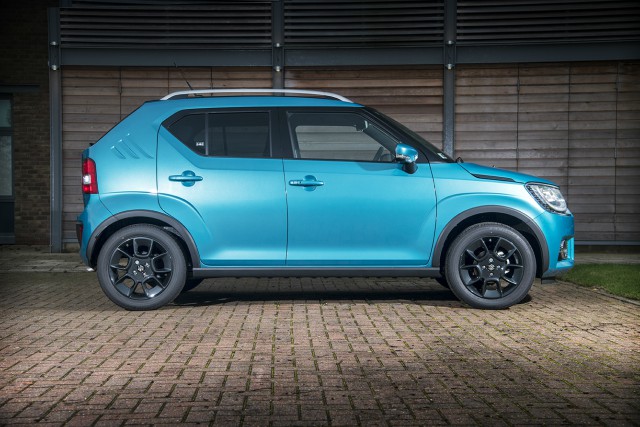
Boot capacity stands at 267 litres, which is slightly below the supermini average. This can however extend to 514 litres by folding the rear seats down, although doing this results in a large hump between the boot and rear.
If you really want to make the most out of the Ignis from a practicality point of view, then you are going to want to exploit its high roof by standing tall objects up in the rear passenger foot wells. According to Suzuki, if you take this approach and decide to load up to the roof line, you can shoehorn in up to 1,100 litres of luggage.
Costs 4/5
This is where small Suzuki models make the most sense. Although UK pricing has yet to be announced, Suzuki has said that Ignis pricing is likely to start from around £10,500 for entry-level SZ3 models and rise to around £13,500 for the SZ5 ALLGRIP SHVS models. This means the Fiat Panda will undercut the Ignis with its £8,000 to £9,000 base models, but the added standard kit and flair of the Suzuki may very well sway tech and fashion-conscious younger drivers.
From a running costs point of view, the 1.2-litre claims an average of 61.4mpg, although we averaged around 53mpg on a mixture of roads. Still, for a small city-based SUV, mid-50s is competitive. CO2 on the other hand is quoted at 104g/km.
Verdict 4/5
Suzuki describes the Ignis as a “Typical Suzuki-ish product”, and that is a pretty apt description. It oozes Suzuki aesthetic, it’s affordable and it’s got a spirited interior design and drive to boot. It may not offer the most conventional styling, but for anyone after a mini SUV, that is an endearing quality – just look at the success of the Nissan Juke.
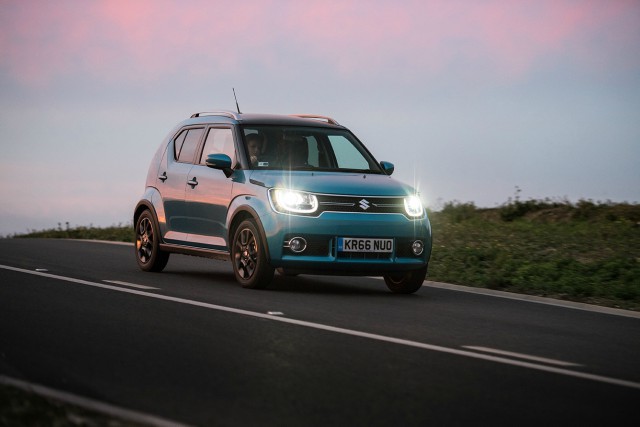
The Fiat Panda has been standing alone in the ‘is it a city car, is it an SUV’ segment for a while now, but it certainly has a worthy adversary in the Ignis.
In many ways, the Ignis feels like a more grown up version of the little Fiat, which is a tasty proposition for those looking for the next fashion trend to sink their teeth into.



